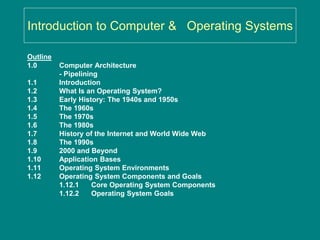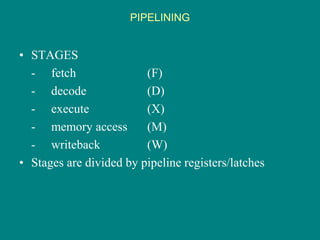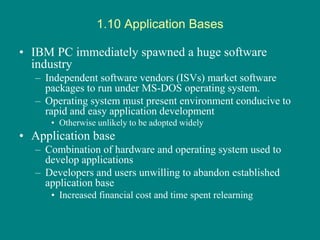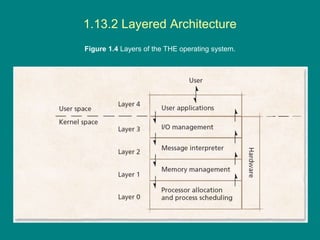The document outlines an introduction to computer architecture and operating systems, detailing their evolution from the 1940s to the present. It covers key concepts such as the von Neumann model, various operating system architectures, core components, and the impact of the internet and the World Wide Web. Additionally, it discusses the goals of operating systems and their environments, including real-time systems and virtual machines.






















































